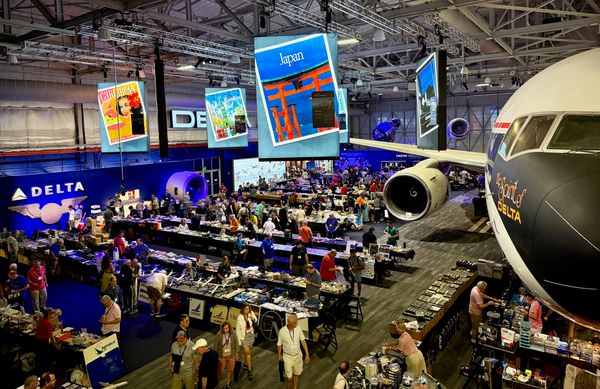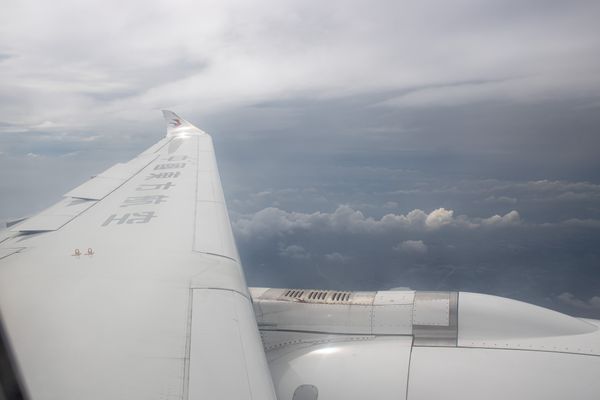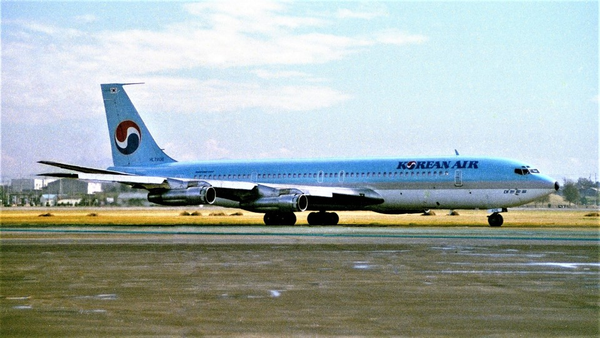If you've ever been on a commercial airline flight, and you hear the whistling of the wind get louder as the aircraft climbs up higher into the sky, you might be wondering just how fast you are actually traveling. One might think that as you climb higher, the plane can travel faster than it was during takeoff and low altitudes. While the theory of this is technically correct, some factors actually make the answer be a combination of traveling slower and faster at the same time.
Sounds confusing, right? Well in this article I'll explain the two main factors that determine exactly how fast commercial airliners fly at cruising altitude, and why it matters.

Airspeed
Believe it or not, the airspeed a commercial jet is moving at while on cruise is actually slower than when it is lower to the ground. Why does this happen? Well, it's all about air density. At higher altitudes, air is less dense than it is closer to the ground, so the amount of airflow over the wing needed to generate the same amount of lift at 5,000 feet vs 35,000 feet is much higher.
The average airspeed of a jet at cruising altitude is about 270-280 knots indicated (which is the direct measurement of airflow over the aircraft), while at lower altitudes during climbs and descents, the airspeed is usually around 300-320 knots indicated. Below 10,000 feet aircraft are speed restricted to 250 knots indicated or less, so below that altitude is being ignored for the sake of this topic.
Ground Speed/Mach Number
In addition to the air being thinner at altitude, the margin of safety for maximum airspeed decreases as altitude increases. So flying at 300 knots indicated at 35,000 feet could cause structural damage to the aircraft compared to flying at the same speed at 15,000 feet. This is because the ground speed of the aircraft is a constantly increasing factor with altitude, thanks to the concept of needing more airflow over the wing at altitude due to decreased density. On average, the ground speed of an aircraft flying at 280 knots indicated at 35,000 feet is between 450 knots and 500 knots over the ground. This is where the Mach number comes into play.
Mach number is the relative speed of the aircraft compared to the speed of sound, and is directly connected to ground speed. Since the speed of sound is based on ground travel, this is why the maximum airspeed of an aircraft decreases with an increase in altitude. Take an aircraft climbing up from 10,000 feet to 35,000 feet. If it maintains 280 knots indicated from the start of the climb to the end of the climb, the decrease in air density as the aircraft climbs causes it to move faster over the ground to maintain the same indicated airspeed. This is what drives the Mach number up.
Commercial jetliners are not designed to be able to withstand the forces produced from the shockwave when an aircraft exceeds the speed of sound, so most airliners cruise between speeds of Mach 0.78 and Mach 0.86 to stay well below that critical threshold. And this Mach speed is exactly why the maximum airspeed of a jet decreases when it's at altitude. Exceeding these airspeeds will push the groundspeed up, increasing the Mach number and putting the aircraft both closer to the speed of sound, and the range of airframe damage.
Summary
Externally, jet stream winds also contribute to how fast commercial planes fly, but their only contributing factor is either increasing or decreasing the ground speed based on whether it's a headwind or tailwind. The indicated airspeed of the aircraft will not change based on that factor.
So in summary, commercial airplanes fly at a very specific speed range at cruising altitude, and rely on two key factors to determine just how fast they fly. Indicated airspeed and groundspeed/Mach number (with a tiny bit of help or hindrance from the jet stream winds). These two forces create the small but defined window of safe airspeeds where we often find ourselves zipping across the sky.
No "Mate's Rates" in the Sky as Qantas Bans All Staff (Including CEO) From New A350 First Class » IndiGo Unveils Delhi–London Expansion and First A321XLR Launch » Pentagon Alarm: China’s ‘Tailless’ 6th-Gen Fighter Prototypes Are Already Airborne »
Comments (0)
Add Your Comment
SHARE
TAGS
NEWS newsinformationalhowfastdo commericalairplanesflycommerical aviationairlinesairlinerspeedRECENTLY PUBLISHED
 AeroXplorer Named Official Media Partner for Airliners International 2026 in Denver
AeroXplorer is proud to announce its appointment as the Official Media Partner for Airliners International™ 2026 Denver. This partnership marks a significant collaboration between the world's largest airline collectibles show and one of the fastest-growing digital voices in the aviation industry.
NEWS
READ MORE »
AeroXplorer Named Official Media Partner for Airliners International 2026 in Denver
AeroXplorer is proud to announce its appointment as the Official Media Partner for Airliners International™ 2026 Denver. This partnership marks a significant collaboration between the world's largest airline collectibles show and one of the fastest-growing digital voices in the aviation industry.
NEWS
READ MORE »
 VIDEO: What It's Like Onboard China's COMAC C919
We flew onboard China Eastern's COMAC C919 to experience China's homegrown narrow-body up close. From seat comfort to cabin layout to noise levels to tech: how does it really compare with the Boeing 737 and Airbus A320? This review puts all three workhorses under the same spotlight.
TRIP REPORTS
READ MORE »
VIDEO: What It's Like Onboard China's COMAC C919
We flew onboard China Eastern's COMAC C919 to experience China's homegrown narrow-body up close. From seat comfort to cabin layout to noise levels to tech: how does it really compare with the Boeing 737 and Airbus A320? This review puts all three workhorses under the same spotlight.
TRIP REPORTS
READ MORE »
 KAL858: The North Korean Bombing that Shocked the World
Among the 99 passengers boarding Korean Air Flight 858 on November 29, 1987, few could imagine their journey would end as one of aviation's darkest mysteries.
STORIES
READ MORE »
KAL858: The North Korean Bombing that Shocked the World
Among the 99 passengers boarding Korean Air Flight 858 on November 29, 1987, few could imagine their journey would end as one of aviation's darkest mysteries.
STORIES
READ MORE »



